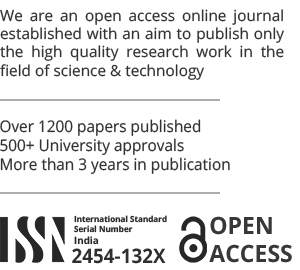Research Paper
Real-Time Health Monitoring System of a Distribution Transformer
Published by: Aman Kumar Singh, Devika Aggarwal, Aditya Sharma
Full Details
Research Paper
A Survey on Improved Dehazing System for Underwater Night Light Fog Images Using Machine Learning Algorithm
Published by: Tamanna Pawar, Shridevi Soma
Full Details
Research Paper
Developing an EOG-Based Communication Interface for Quadriplegic Patients: Prototype, Signal Processing, and Algorithm Design
Published by: Aniket Raj, Amit Kumar
Full Details
Review Paper
Unemployment Trends in India
Published by: Sushmitha M, Deepu.M, Shalini.K, Aswini.B, Rehana Banu
Full Details
Thesis
Enhanced Security in Signature Verification System Using Dynamic Sign Retrieval
Published by: Dhanush.M, Tharneesh.S.R, Arun.R, Ramya.S
Full Details
Research Paper
ConnectCraft – Simplifying Network Choices
Published by: Suyog Karpe, Atharva Ostwal, Yashshree Kirad, Atharva Pawar
Full Details
